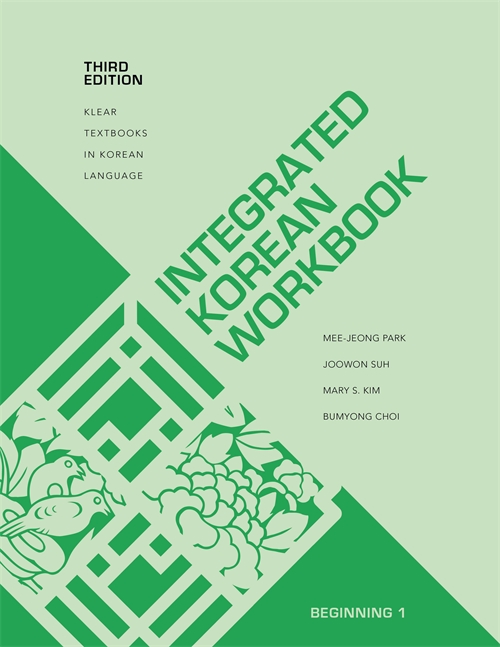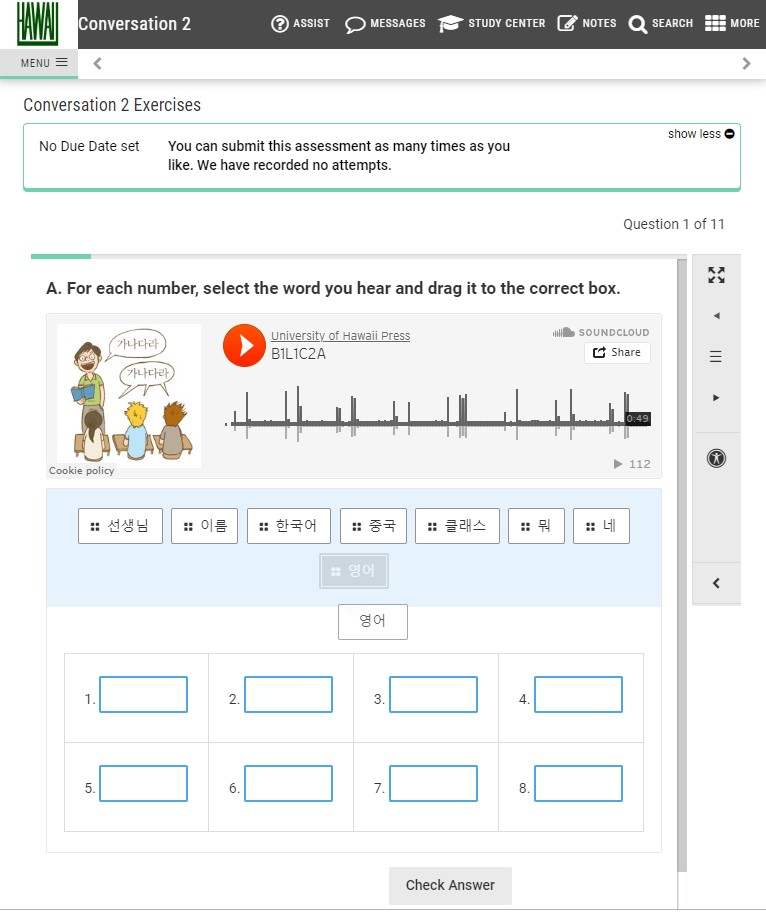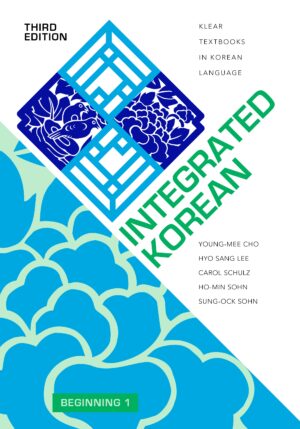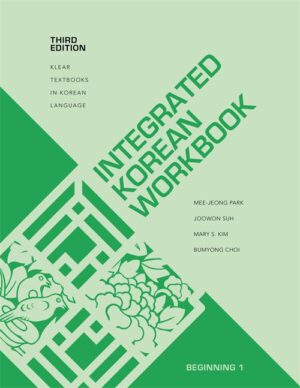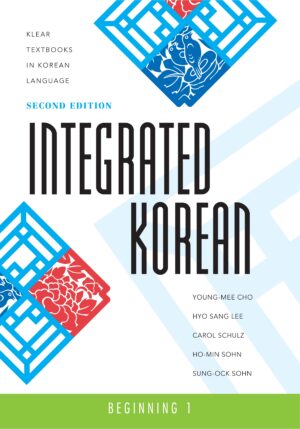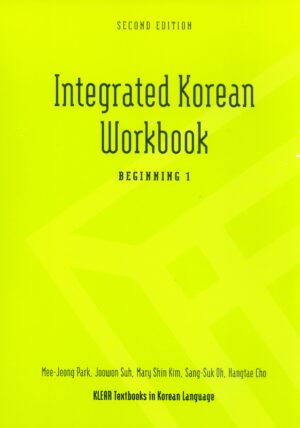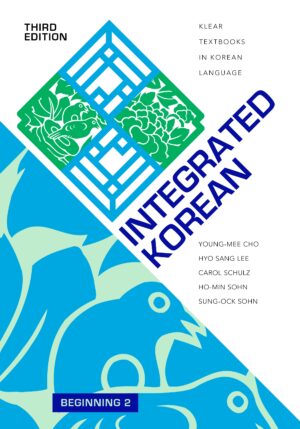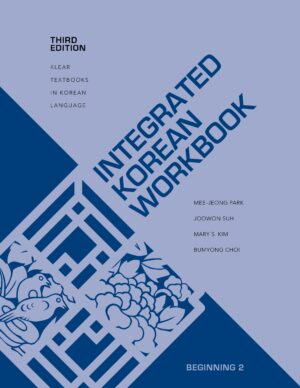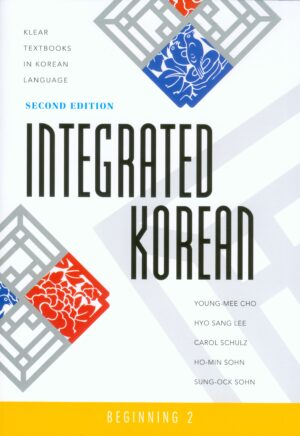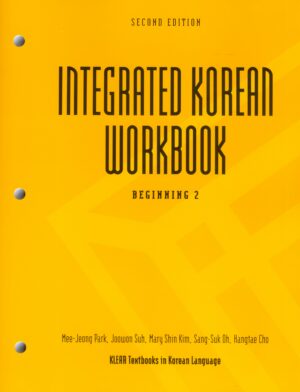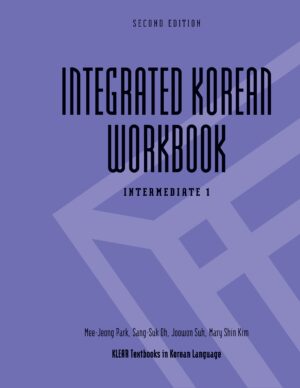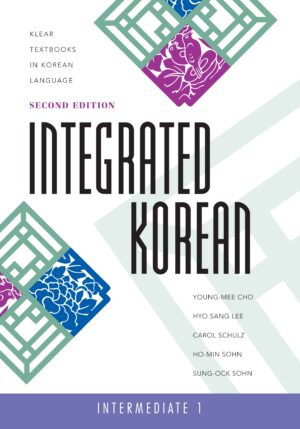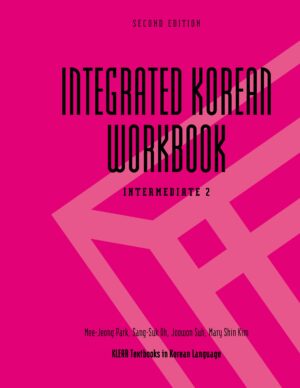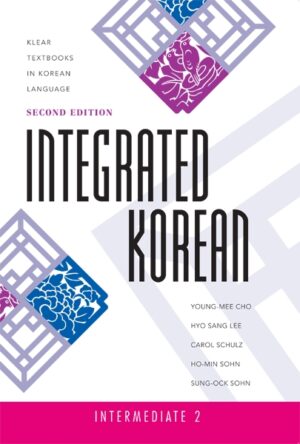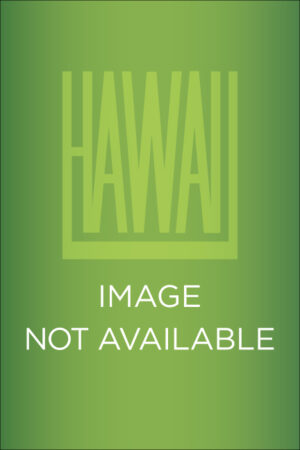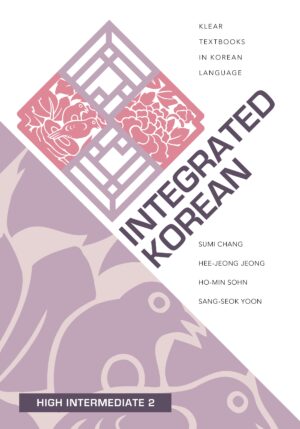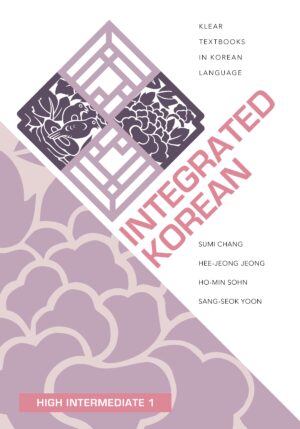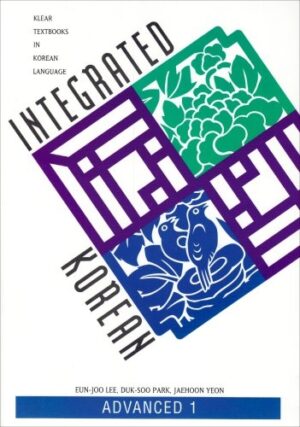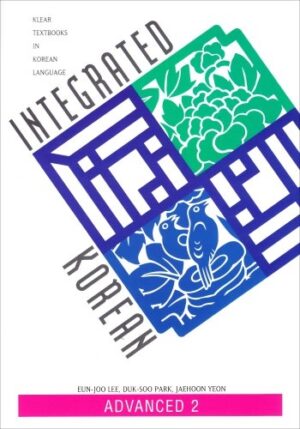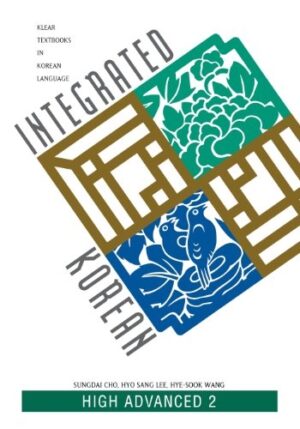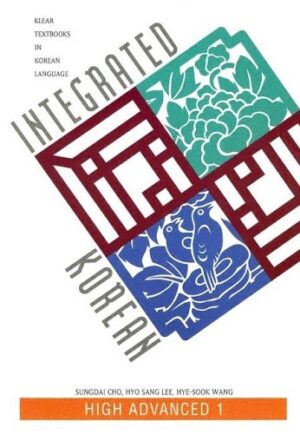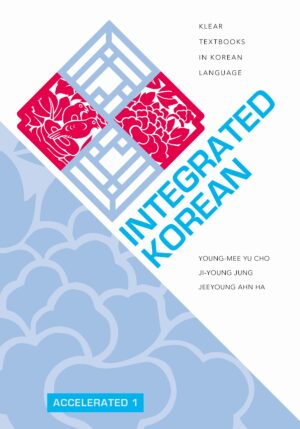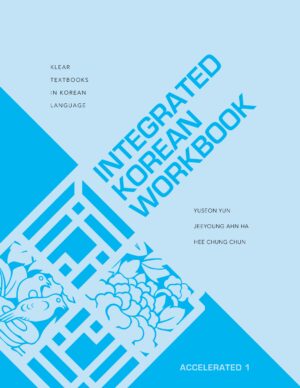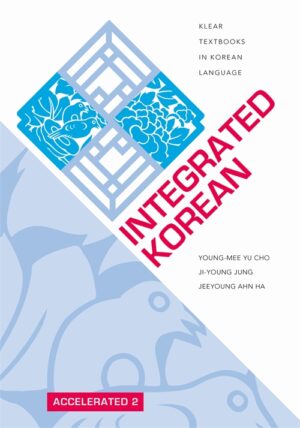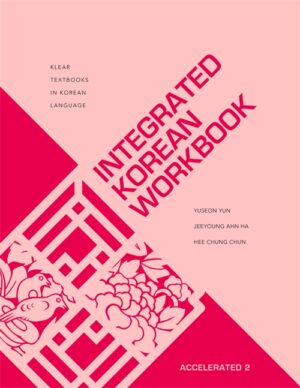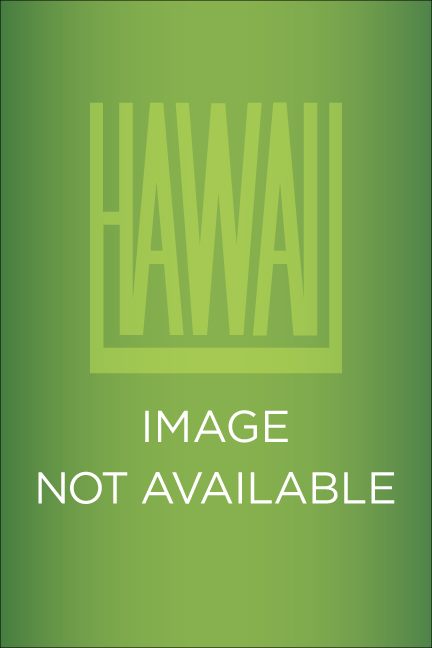 Developed by the Korean Language Education and Research Center (KLEAR) with the support of the Korea Foundation, the best-selling KLEAR Textbooks in Korean Language series is highly respected by Korean-language instructors and students worldwide.
Developed by the Korean Language Education and Research Center (KLEAR) with the support of the Korea Foundation, the best-selling KLEAR Textbooks in Korean Language series is highly respected by Korean-language instructors and students worldwide.
To accommodate a wide range of student abilities, the series includes more than two dozen titles to date, from the thoroughly revised Integrated Korean: Beginning 1 and 2 (third edition) to the new third-year textbook Integrated Korean: High Intermediate 1 and 2 to the fifth-year Integrated Korean: Advanced 1 and 2. For advanced students, the series offers books on Korean composition and language in culture and society and readers for modern Korean literature and Chinese characters encountered in everyday written Korean. See the updated list of titles here.
The core Integrated Korean textbooks have been developed in accordance with performance-based principles and methodology—contextualization, learner-centeredness, use of authentic materials, usage-orientedness, balance between skill getting and skill using, and integration of speaking, listening, reading, writing, and culture. Grammar points are systematically introduced in simple but adequate explanations and abundant examples and exercises. Digital options and audio are available for most Integrated Korean volumes. These files may be downloaded at https://kleartextbook.com.
For complimentary desk or examination copies, instructors are encouraged to contact us at email: klear@hawaii.edu.
In This Series:
Integrated Korean: Beginning 1, 3rd Edition
Integrated Korean: Beginning 1, 2nd Edition
3rd Edition Additional Resources:
Beginning 1 Audio Korean Alphabet
2nd Edition Additional Resources:
Lecture Slides:
Integrated Korean: Beginning 2, 3rd Edition
Integrated Korean: Beginning 2, 2nd Edition
3rd Edition Additional Resources:
Beginning 2, Audio Lesson 8-16
2nd Edition Additional Resources:
Lecture Slides:
Integrated Korean: Intermediate 1, 2nd Edition
Integrated Korean: Intermediate 2, 2nd Edition
Integrated Korean: Intermediate 2, 1st Edition
A Resource for Korean Grammar Instruction

This book accompanies KLEAR’s Integrated Korean text series. It contains nearly 1,000 activities on 160 of the most commonly used grammar patterns for beginning and intermediate levels, all sorted by alphabetical order, as well as topics for comprehensive grammar instruction using an interactive approach. Nearly 40 practical activities and lesson ideas for advanced levels are also included. These activities are sorted by skill orientation (e.g., speaking-oriented, reading-oriented, etc.), which will allow them to be used with any Korean-language textbook published in the U.S., Korea, or elsewhere.
Instructors who teach Korean as a foreign language in colleges, secondary schools, and community schools and even as private tutors will welcome the easy-to-use grammar activities, which provide practical guidelines for both new and experienced teachers. These lessons reflect the current trend among Korean-language learners in U.S. universities, where, traditionally, primary learners were students of Korean heritage. In recent years, the number of non-heritage learners has increased and thus, to meet their needs, activities with different degrees of difficulty are provided for each grammar pattern and topic enabling instructors to select those most suitable to their students’ needs.
A Resource for Korean Grammar Instruction is divided into two main parts: 1) activities by forms for beginning and intermediate levels; and 2) activities by skill for more advanced levels. The first part includes greetings and Hangul, sentence endings, clausal endings, other suffixes, particles, and more. The second covers vocabulary-oriented activities, speaking/listening activities, reading-oriented activities, and writing-oriented activities. Supplementary instructional materials such as Power Point presentations, video clips, photos and images, and sample quizzes are available free for download at www.kleartextbook.com under the Instructor section after a simple login.
Korean Language in Culture and Society
Intended as a companion to the popular KLEAR Textbooks in Korean Language series and designed and edited by a leading Korean linguist, this is the first volume of its kind to treat specifically the critical role of language in Korean culture and society. An introductory chapter provides the framework of the volume, defining language, culture, and society and their interrelatedness and presenting an overview of the Korean language vis-à-vis its culture and society from evolutionary and dynamic perspectives.
Early on, contributors examine the invention and use of the Korean alphabet, South Korea’s “standard language” vs. North Korea’s “cultured language,” and Korean in contact with Chinese and Japanese. Several topics representative of Korean socio-cultural vocabulary (sound symbolic words, proverbs, calendar-related terms, kinship terms, slang expressions) are discussed, followed by a consideration of Korean honorifics and other related issues. Two chapters on Korean media, one on advertisements and the other a comparative analysis of television ads in Korea, Japan, and the U.S., follow. Finally, contributors look at salient features of the language, narrative structure, and dialectal variation. All chapters are accompanied by a set of student questions and a useful bibliography. A beginning level of proficiency in Korean is sufficient to digest the Korean examples with facility, making this volume accessible to a wide range of students.
Contributors: Andrew S. Byon, Sungdai Cho, Young-A Cho, Young-mee Y. Cho, Miho Choo, Shin Ja J. Hwang, Ross King, Haejin Elizabeth Koh, Jeyseon Lee, Douglas Ling, Duk-Soo Park, Yong-Yae Park, S. Robert Ramsey, Carol Schulz, Ho-min Sohn, Susan Strauss, Hye-Sook Wang, Jaehoon Yeon.
Readings in Modern Korean Literature
Readings in Modern Korean Literature provides advanced students (those with at least four years of college-level training in Korean) with materials that will help them understand and appreciate modern Korean literary traditions as well as challenge them to use their Korean-language competence to the fullest extent. It offers the student a wide range of literary writing, including three different genres of poetry, short stories, and essays. Each piece is accompanied by a vocabulary glossary and notes, explanations of socio-cultural details, an introduction to the author, and a translation. The textbook is distinguished by a variety of exercises designed to enhance students’ proficiency in referential reading, writing, and comprehension skills.
Selected Readings in Korean
The first advanced Korean reading text for non-native speakers, Selected Readings in Korean consists of eighteen lessons on diverse, stimulating topics such as Korean traditions, culture, and society. It is designed for use by students who have completed the fourth-year level in Korean (approximately five hundred class hours) or the equivalent.
Each lesson consists of six sections: prereading group activities, which not only serve as a schema for efficient comprehension of the reading text to follow, but also help students broaden their relevant knowledge; an authentic main reading text on an informative and interesting topic; explanations in Korean and English of words that may be unfamiliar to students, including words indicating abstract or culture-specific concepts; explanations of idiomatic expressions; extensive exercises intended to help students master the contents of the text, new vocabulary, and grammar while improving their composition and oral presentation skills; and post-reading activities designed to further thinking and group discussion on subjects related to the main topic of the lesson.
Appended are translations of the main reading texts of all eighteen lessons and a Korean-English glossary. Overall, special effort has been made to render the volume learner-centered and learner-friendly.
Korean Reader for Chinese Characters
Korean Reader for Chinese Characters will help students of Korean master basic Chinese characters that are frequently encountered in everyday situations. More than five hundred characters are targeted in exercises that aid in the efficient study of the forms, meanings, and sounds of individual characters and their compounds. Although the primary goal of the Reader is recognition of basic Chinese characters, students are encouraged to learn to write them properly by inclusion of a section on stroke order. The Reader is also designed to reinforce skills in reading and writing in Korean while studying Chinese characters.
Forty lessons are preceded by an introductory chapter on the principles of Chinese character formation and reading and writing characters and followed by appendices on stroke order, English translations of the main reading text of each lesson, and an index of characters. The lessons are organized into seven parts: new characters, reading text, glossary, notes, new words in characters, more words in characters, and exercises. After every fifth lesson, there is a section reviewing all the characters introduced in the preceding five lessons.
Korean Composition
Korean Composition is the first book in English for students of Korean language aimed not only at enhancing their writing skills and overall linguistic competence, but also at organizing and developing their ideas and thoughts with grammatically, stylistically, and culturally correct expressions. The Essential Composition section contains chapters concerned with the writing of essays, diaries and letters, document preparation, and expository writing. The Advanced Composition section considers descriptions of impressions, writing poetry, newspaper accounts, writing articles and theses, and summarizing. Each chapter consists of numerous units designed to cover words, phrases, idioms, and grammatical patterns (with sentence examples). Exercises and a model writing example are included in each unit.
Advanced students who need assistance in choosing proper topics and materials as well as in using diverse expressions in creative writing will benefit from the section on steps of composition and styles of writing. English translations of model writings, an index of useful grammatical patterns, and an English-Korean glossary are provided at the end of the text.
Korean Composition is aimed at college-level students who have completed at least beginning and intermediate levels of Korean. For students using the Integrated Korean series, this text is recommended for use after the completion of Advanced Intermediate 2.






